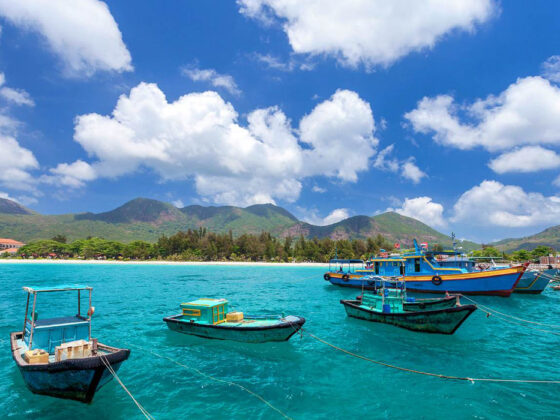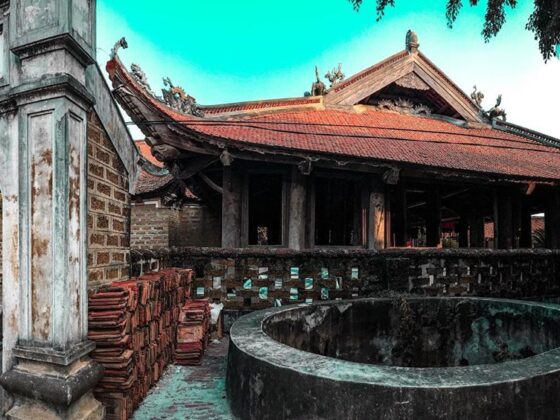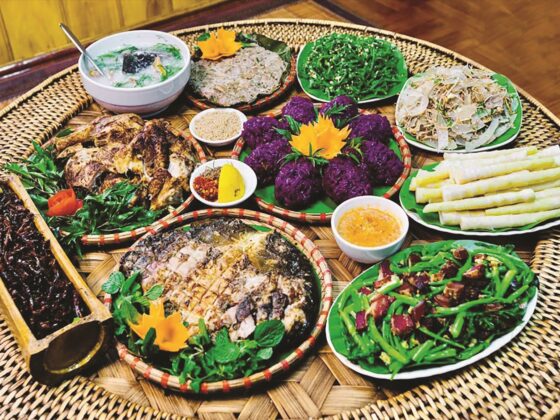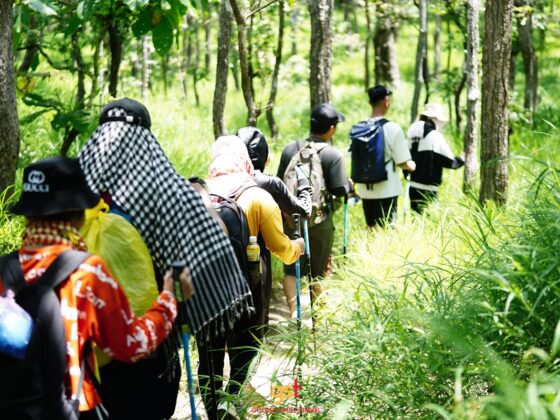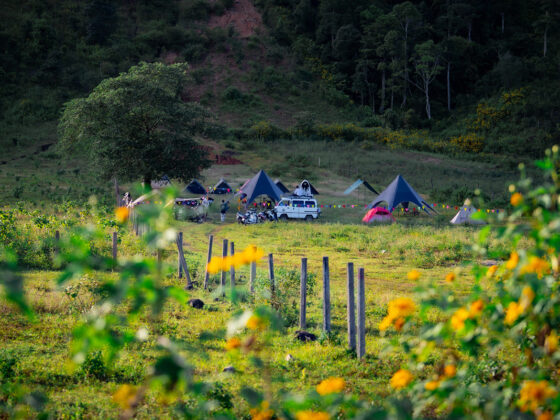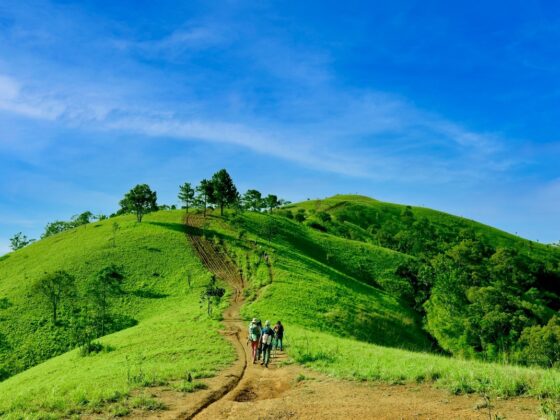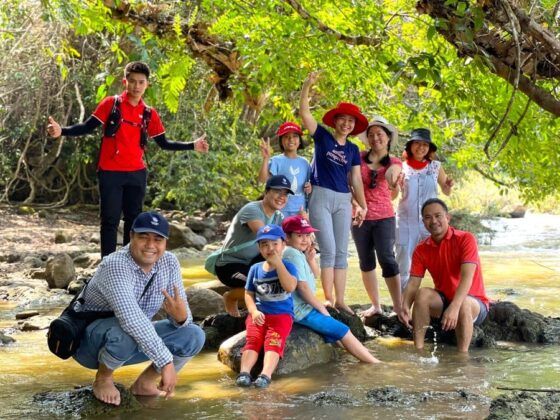Table of Contents Show
Vietnam’s stunning landscapes, from the lush rice terraces of Sapa to the dramatic mountains of Phong Nha, are truly some of the most breathtaking trekking experiences in Southeast Asia. For many adventurers, this raises a common dilemma: the choice between solo vs group trekking in Vietnam. Each option offers its own unique charm, and your choice can make all the difference. Let’s delve into the pros and cons to help you decide.
Read more interesting posts here:
- Embracing the Rain: Your Ultimate Guide to Vietnam Wet Season Travel
- Market Trails: A Trekker’s Journey to the Vibrant Bắc Hà Sunday Market
- Lảo Thẩn Mountain Trek: Conquer the Untamed Dragon’s Spine
The case for solo trekking in Vietnam
Trekking solo can be an exhilarating and deeply personal experience. For many, it offers a sense of freedom that is hard to replicate in a group setting. When thinking about solo vs group trekking in Vietnam, here are some reasons why you might consider taking the solo route:
1. Personal Freedom and Flexibility
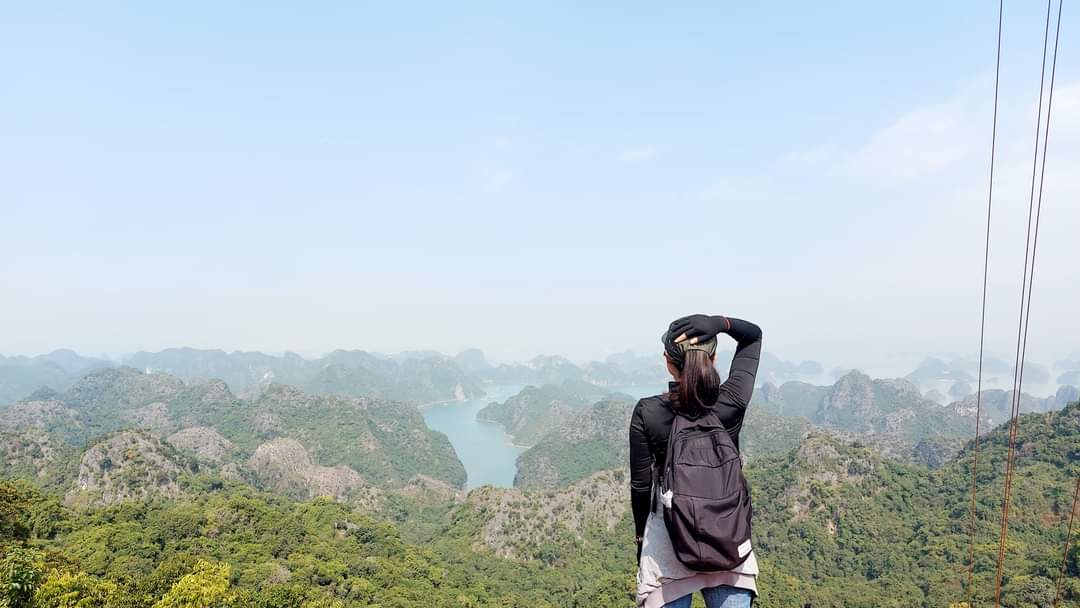
One of the most liberating aspects of solo trekking is the ability to create your own itinerary. You can choose your route, set your own pace, and linger as long as you like at those breathtaking viewpoints or captivating local markets. This flexibility allows you to immerse yourself fully in the experience, savoring the moment and discovering hidden gems that might be overlooked when traveling with others, a key consideration when thinking about solo vs group trekking in Vietnam.
2. Self-Discovery and Reflection
There’s something incredibly rewarding about spending time alone in nature. The quiet moments on the trail can lead to profound insights and personal growth. Hiking by yourself allows for a deep connection with the surroundings, fostering mindfulness and introspection. In the serene landscapes of Vietnam, the beauty of nature often inspires reflection and self-discovery, making each step feel meaningful.
3. Connection with Locals
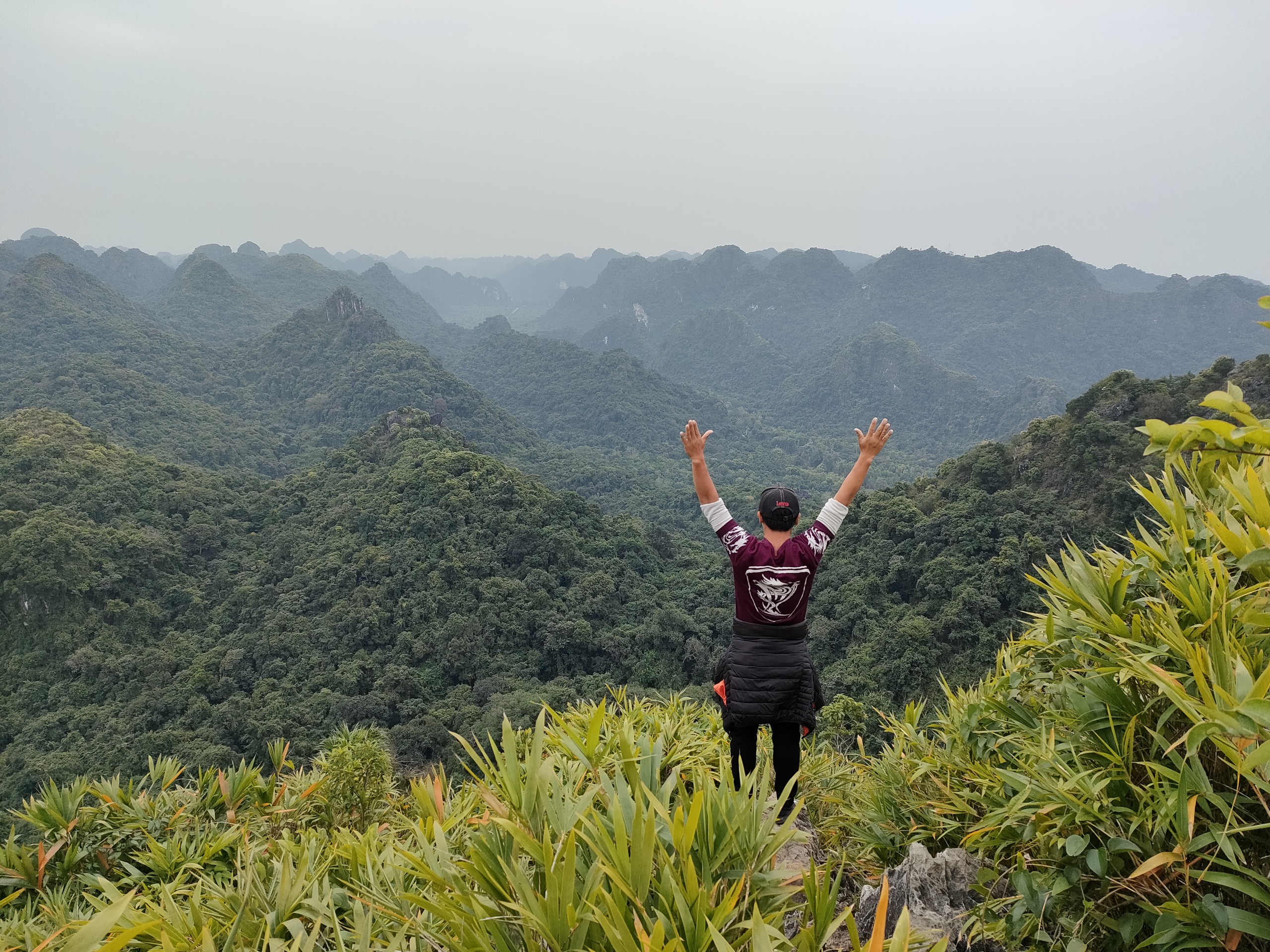
Traveling solo can create unique opportunities to connect with local communities. Without the buffer of a group, you might find it easier to engage with villagers, share stories, and learn about their way of life. In regions like Sapa, where ethnic minorities reside, these genuine interactions can enrich your travel experience, offering insights into the rich cultural tapestry of Vietnam, and also highlight one of the key contrasts in solo vs group trekking in Vietnam.
The Advantages of Group Trekking in Vietnam
While solo trekking has its own allure, group trekking comes with its own set of advantages that can enhance your adventure. Here are some reasons to consider joining a group trek:
1. Enhanced Safety and Support

Trekking in a group can provide an added layer of safety. In Vietnam’s remote areas, navigating unfamiliar trails can pose challenges, and having fellow trekkers by your side can be reassuring. In case of emergencies, a group can offer immediate assistance, whether it’s dealing with a minor injury or finding your way back to the path. When weighing solo vs group trekking in Vietnam, safety is often one of the strongest arguments in favor of group travel.
2. Shared Experiences and Camaraderie
There’s something magical about sharing your adventure with others. Group trekking fosters camaraderie, and the bonds formed on the trail can lead to lasting friendships. Sharing meals, stories, and laughter around a campfire can create memories that you’ll cherish long after the trek is over. In Vietnam, where hospitality is a cultural hallmark, these shared experiences deepen your appreciation for the journey, and highlight why the debate of solo vs group trekking in Vietnam is ultimately about finding the kind of magic that resonates most with you.
3. Guided Expertise

Many organized treks in Vietnam come with knowledgeable guides who provide valuable insights about the local flora, fauna, and cultural history. Their expertise can enrich your experience, helping you understand the significance of the landscapes you encounter. Group treks often include support staff, making the journey more comfortable and allowing you to focus on the adventure itself, an important consideration when weighing solo vs group trekking in Vietnam.
Solo vs group trekking in Vietnam: Making the right choice

Ultimately, the decision in the solo vs group trekking in Vietnam debate comes down to your personal preferences, experience level, and the type of adventure you seek. If you value independence, self-reflection, and the chance to forge your own path, solo trekking may be your perfect match. On the other hand, if you enjoy shared experiences, the comfort of companionship, and the support of a knowledgeable guide, a group trek might be the way to go.
Conclusion
There is no single right answer to the solo vs group trekking in Vietnam question. The best choice is the one that aligns with your personal goals for the journey. Trekking solo offers unparalleled freedom and introspection, while group trekking provides safety, camaraderie, and expert guidance. Regardless of your choice, Vietnam’s stunning landscapes and rich culture promise an unforgettable experience that will leave an indelible mark on your heart.
Whether you choose to trek solo or in a group, consider using the ExoTrails app. You’ll find a wealth of articles about trekking, safety tips, and recommendations for the best places to explore. The ExoTrails BaseCamp community is also a fantastic resource for connecting with fellow trekkers.
Ready to find your trail? Join our community of explorers in the ExoTrails Facebook Group and follow the ExoTrails Fanpage for daily inspiration and trail tips!
FAQs
Is it safe to trek alone in Vietnam?
While Vietnam is generally a safe country, trekking alone in remote or unmarked areas is not recommended. If you choose to hike solo, stick to popular, well-trafficked trails and always inform someone of your plans.
What are the main benefits of a group trek?
The main benefits are increased safety, the camaraderie of shared experiences, and access to the knowledge and expertise of a local guide.
How do I choose between solo and group trekking?
Consider your experience level, comfort with solitude, and what you want to get out of the trip. If you prioritize safety and social connection, choose a group; if you value freedom and self-discovery, solo might be for you.
Do I need a guide for trekking in Vietnam?
For popular, easy trails, a guide may not be necessary. However, for remote, multi-day, or challenging treks, a local guide is highly recommended for safety, navigation, and cultural insights.
Which is better for a beginner, solo or group trekking?
For a beginner, group trekking is almost always the better and safer option, as it provides support, guidance, and a built-in safety net.



